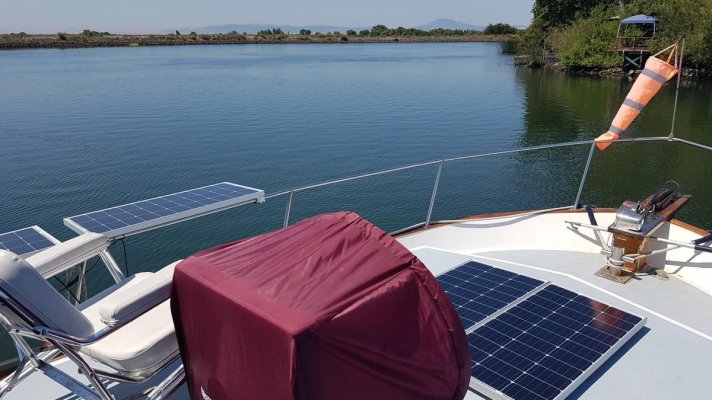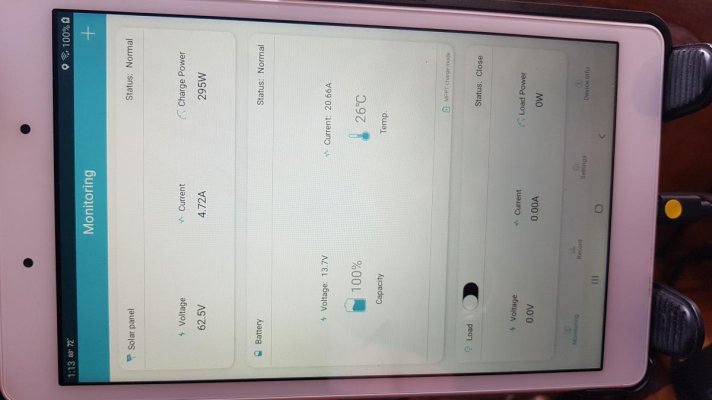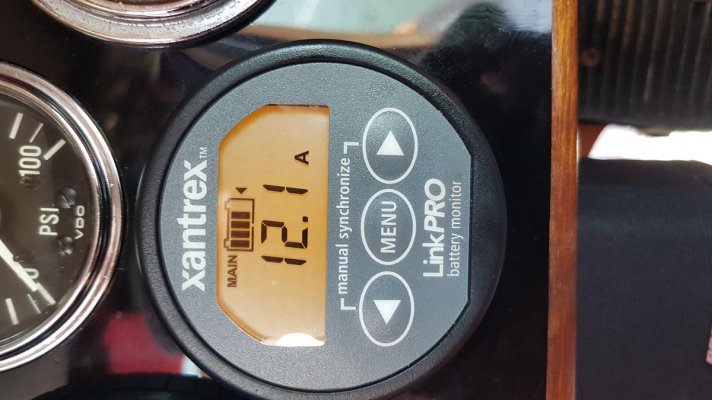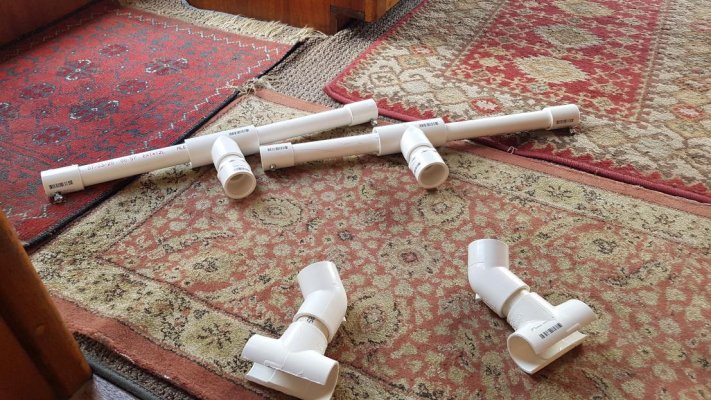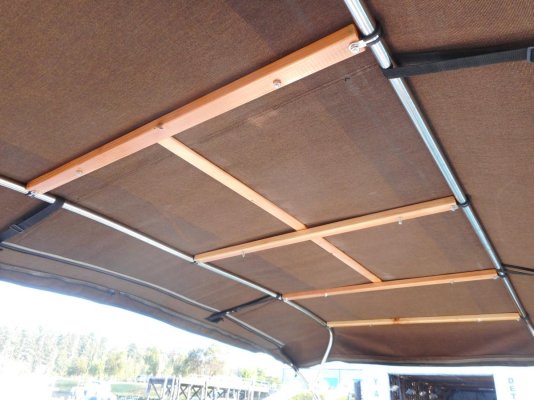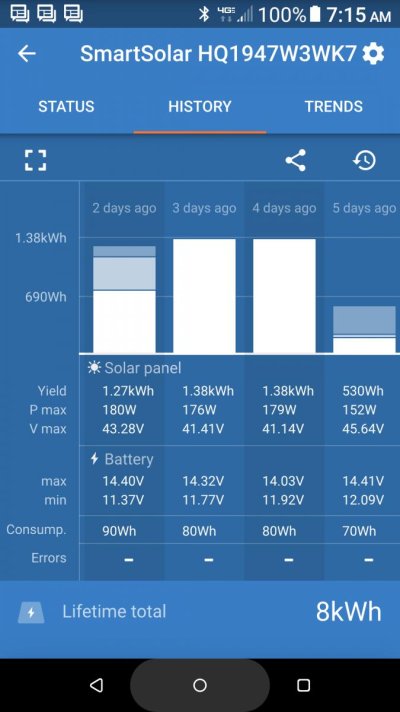I installed solar on my boat this month. To get a better overall idea of my boat's electrical needs and my solar system's capabilities, here's a summary of my boat's electrical profile.
Boat: 1977 34 ft Californian, primarily 12V with 30A shore power, no air conditioning, 1000w inverter supplying limited power to microwave, 110V countertop fridge/freezer, and misc fans/chargers. I also have a 5.8cf installed NovaKool fridge/freezer. The typical daily AH budget is 180-200AH. The 2 fridges are by far my biggest load items and when food supplies dwindle on longer trips, the countertop unit, which has the highest demand, can be turned off. With both fridges, I can carry 4-6 weeks of food for one person/2-3 weeks for two.
I typically lose about 60-70 AH/night (~10% SOC) during the dark hours which is included in the 180-200AH daily budget.
Battery: 660AH FLA 6xGolf Cart house bank
Solar System: 4 x 100W Renogy Monocrystalline panels (400W total) on fwd deck rail mounts, 40W MPPT controller (capable of handling 560W) with Bluetooth option which allows system monitoring on any of my devices within BT range. Inline 30A fuse installed +input line at the controller and 30A fuse installed between battery and controller.
Generator: Honda eu2000i portable generator secured and operated on flybridge (aka, my attic with a $1M view).
My goal was to meet most house loads to minimize the gen run time to those times when heating water (when not operating the stbd engine) and for some cooking needs. I also wanted a quiet boat at anchorages in the morning when the house bank is normally at its lowest, allowing me to make breakfast and coffee without bothering the neighbors.
While the final two panel's rail mounts remain to be installed, here's the preliminary results in Northern California summer days on the California Delta.
I'm finding a real world output of my panels is consistently 15-21A during the hours of 1000-1600 with outputs tapering to zero as the sun is lower on the horizon. My typical average house loads are ~8A/hr over the 24 hr day. (180-200AH) My net charge to the house bank runs 7-13A during full sun.
I have designed and will install panel prop rods to provide the ability to adjust the panels for optimum exposure but intend to set them as fixed, as on a rooftop, to see how they produce without the need to "chase the sun" using multiple adjustments through the day. The panels stow by hanging vertically below the fwd rail when docking. If these PVC prototypes work, I plan to use 1" SS pipe for the 'final final' version.
I'll update with photos and more real world results after completing all the final requirements.

